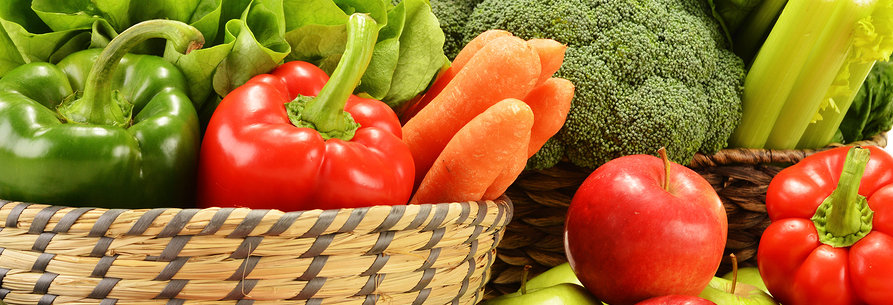A raw food diet consists mostly of uncooked plant foods. People switch to raw food diets to lose weight, get more vitamins, minerals and fiber and eliminate toxins. Raw food diets are popular among vegetarians and vegans because they contain little or no foods that come from animals. (Some raw foodists eat raw animal products, such as unpasteurized milk and sashimi.)
Taboo foods include refined sugars as well as anything processed or pasteurized.
Because raw food diets have such strict limitations, followers often don’t adhere to them 100 percent. It’s common for someone to have a diet that’s 75 or 80 percent raw food.
Quiz: Is Your Body TOXIC? Take the Test...
(get your free personalized report)
How do the claims stack up?
Weight Loss
A raw food diet can help you lose weight, simply by reducing the number of calories you take in. With a raw food diet, you can’t eat a hamburger and fries from a fast food restaurant or a giant bag of potato chips from the supermarket. If you have to prepare your food from scratch, you’re less likely to eat when you aren’t truly hungry.
Limiting your intake of refined sugars will help you lose weight by preventing insulin spikes, while increasing your fiber intake will encourage weight loss by slowing down the rate at which you digest carbohydrates, and making you feel fuller sooner.
Nutrients
Raw food diets can give you more of some nutrients, but are deficient in others.
It’s true that fruits, vegetables and nuts are rich in essential nutrients. A raw food diet will ensure that you get many of the vitamins and minerals your body needs. These include:
Quiz: Is Your Body TOXIC? Take the Test...
(personalized report)
- Vitamin A – Sources include kale, carrots, spinach, mangoes, apricots, papaya, cantaloupe
- Vitamin B1 (thiamine) – Found in kale, oranges, watermelon, nuts (a good source of healthy fats)
- Vitamin B2 (riboflavin) – Leafy green vegetables, bananas, almonds
- Vitamin B3 (niacin) – Leafy green vegetables, carrots, avocados, nuts
- Vitamin B5 (pantothenic acid) – Kale, avocados
- Vitamin B6 (pyridoxone) – Spinach, green peppers, bananas, avocados, nuts
- Vitamin B7 – Leafy green vegetables, nuts
- Vitamin B9 (folate) – Spinach
- Vitamin C – A wide variety of fruits and vegetables
- Vitamin E – Avocados, tomatoes, nuts, kiwifruit, mangoes, papaya
- Vitamin K – Kale, chard, spinach, parsley, watercress, collard greens
- Iron – Spinach, watercress, tomatoes
- Zinc – Spinach, almonds, sunflower seeds (also used in the Isamune spray to help boost your immune system)
- Potassium – Spinach, chard, bananas, papayas, avocados
- Calcium – Green leafy vegetables, nuts
- Magnesium – Spinach, chard, tomatoes, nuts
- Manganese – Spinach, pineapple, strawberries, raspberries
Why not cook these nutrient-rich foods? Raw foodists claim that cooking food reduces nutrient levels. In some cases, this is true. For example, when you boil a potato, a large amount of B vitamins and vitamin C are lost.
While raw foods are an excellent source of many nutrients, a raw food diet alone cannot supply all the nutrients your body needs. If you don’t eat any animal products at all, you’ll need to take vitamin B12 supplements. A 2005 study of 201 people on a raw food diet found that 38% had vitamin B12 deficiencies.
A raw food diet is also lacking in vitamin D, so take a supplement or make sure you get plenty of sunlight – the most important vitamin D source. Vitamin D is necessary for bone health, and people on raw vegetarian diets can suffer from low bone density. You may want to think about taking a vitamin D supplement and cutting down on sunscreen.
Adding animal products to your diet occasionally will also help you avoid nutritional deficiencies.
Antioxidants
Vegetables and fruits are important sources of antioxidants, including vitamins C and E. Other antioxidants in raw foods are polyphenols, found in citrus fruits, apples, grapes, radishes and onions; lycopene, found in red peppers, tomatoes and pink grapefruit; and carotenoids, which include vitamin A and give an orange color to foods like apricots, carrots and cantaloupe.
Cholesterol
While raw food dieters have low levels of triglycerides and LDL cholesterol (bad cholesterol), they also have low levels of HDL cholesterol (good cholesterol). You can increase your HDL cholesterol levels with exercise that increases your heart rate.
Reducing Toxin Exposure
Avoiding processed foods of any kind is a good way to reduce exposure to toxins. Like all clean diets, a raw food diet doesn’t include preservatives, artificial colors or artificial flavors. However, raw food diets are also designed to eliminate toxins created during cooking.
Research shows that heating meat, potatoes and bread can cause toxins to form. By avoiding meat and avoiding cooking, people on raw food diets are doubly sure of being toxin-free.
The high water and fiber content of fruits and vegetables also plays a role in toxin elimination. Water helps flush out toxins, and fiber helps your digestive system work more efficiently, making it easier for your body to remove toxins on its own.
Additional Sources:
Food Processing and Nutrition, Better Health Channel
High Cholesterol, Mayo Clinic
Low Bone Mass in Subjects on a Long-term Raw Vegetarian Diet, JAMA Internal Medicine
Phytochemicals, American Cancer Society


Raw coconut oil also raises the good HDL cholesterol very significantly.